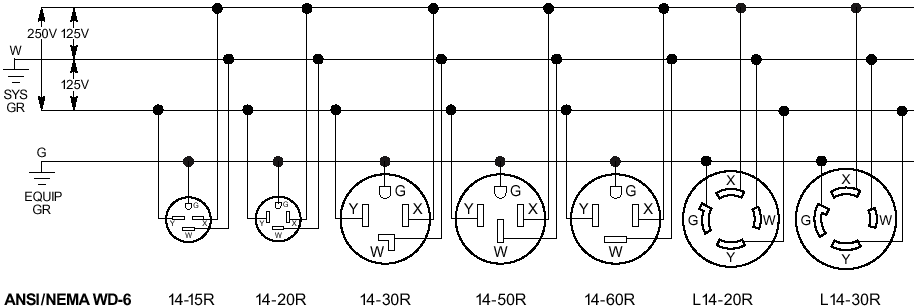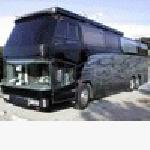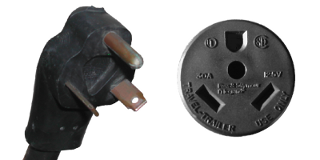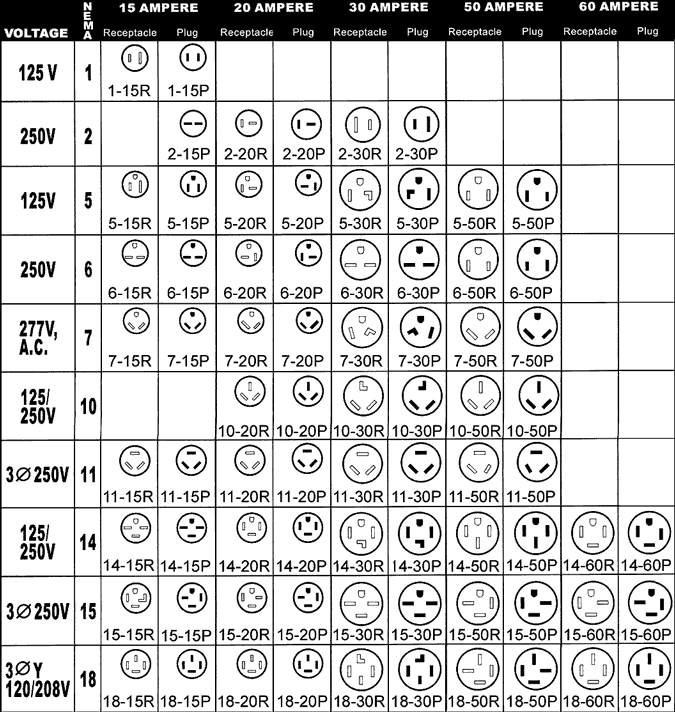| Author | Message | ||
| L James Jones Jr (Jamo)
Registered Member Username: Jamo Post Number: 76 Registered: 11-2007 Posted From: 74.79.238.19  Rating: N/A |
Hi All, I'm in the process of rewiring all the 110v & house 12v in my 4104. I have a 100a (12x) breaker box, an older Newmark power converter/battery charger (Model DCF 50 F, 50a output w/integral overload protection), and a Tripp-Lite PV 1200 FC Inverter (1200w, modified sine wave). I plan on using all of it over. So... 1)In a previous post, I saw where Sean(?) made it clear that the 2 grounding lugs in my box should NOT be inter-connected? Did I read this right? Should I keep all my grounds to one and all the neutrals to the other...and remove the connecting bar between the two? What's the best way to ground the 110v stuff & where??? 2)The main breaker was jumped between the lugs, and the shore power was for 110v only. I have a 110v water heater, so should I just keep the 110v or go 220v to the main? I have no 220v needs. 3)What male plug is best (most common) for the shore power cable campground connection? I have a big fat 4 conductor cable (maybe 10ga.?) 4)The Converter has 6 or so fused terminals to run my 12v stuff from. Can I run a loop for all my 12v lighting (8 fixtures or so?) from one lug? I plan on separate runs for the furnace, fans, etc. My curent fridge is 110v only, BTW. 5)What's the best way to get my generator involved. My old S&S had the simple yet effective plug to go either way. I think I would trust that more than some sort of switch, but if there's a better way, I'm all for it. Guess that's it for now. After reading all the squabbling about stranded verses Romex (I live a few miles from Rome, NY...Romex's home, BTW) I have already purchased 12 ga stranded THHN in white, black, & green. IS it OK to use this for the 12v stuff as well? Hope so, 'cause I have 500ft of each...and I WILL mark the 12v as such. Pointers, suggestions, recommendations, and humor will be most appreciated. Thanks much to all of you. What a great group we have here.... Jamo | ||
| James Robinson (Jjrbus)
Registered Member Username: Jjrbus Post Number: 189 Registered: 12-2000 Posted From: 68.242.109.13 Rating: N/A |
I had a Tripp lite MSW inverter and it did everything I needed to do. But, there is always a but. It had a single stage battery charger and it took a loooooong time to charge the batteries. I upgraded to an inverter with a three stage charger. Jim | ||
| George M. Todd (George_mc6)
Registered Member Username: George_mc6 Post Number: 907 Registered: 8-2006 Posted From: 76.171.79.185 Rating: N/A |
Jamo, #1. Sean and several other of us electricians have made it VERY clear that the GROUND and NEUTRAL bars are NEVER connected in the panel. The ground/neutral connection occurs ONLY at the power source, period! #2. Main breaker jumped together across both bars. Correct for 20 or 30 Amp shore, MUST be seperated for 50 Amp. #3. If you have a big fat 4-wire shore cable, its a #6 AWG 50 Amp cable. Most common would be a 30 amp plug, which only requires a 3 conductor # 10 AWG cable. (Change the plug to a 30 Amp, and connect it to only one hot wire, as well as the ground and neutral, or buy a 30-50 adapter.) See #2. #4. Yes. #5. A female receptacle matching the shore male end, connected to the generator output, mounted in the compartment where you store the shore cord will work safely and properly. 12 Gauge stranded? My personal preference, and absolutely OK, as long as the circuit breakers/fuses are rated no more than 20 Amps. How are you changing from shore/gen to inverter now? A real HEAVY! More inverter info needed. G | ||
| L James Jones Jr (Jamo)
Registered Member Username: Jamo Post Number: 77 Registered: 11-2007 Posted From: 74.79.238.19  Rating: N/A |
Thanks James & George... George, That last line about changing shore/gen to inverter...I'm thinking I'll just do the plug thing as you suggested, between the gen/shore power. The 110v plug at the bus is mounted to the exterior wall, above the luggage bays, so running the gen while driving might be tough. No air anyway, so no real reason to run the gen. What additional info do you need on the inverter? What would you suggest for my "heavy" changeover gear? I do believe I'm lost with that one... Thanks for the help... Jamo | ||
| Cullen Newsom (Cullennewsom)
Registered Member Username: Cullennewsom Post Number: 94 Registered: 2-2009 Posted From: 98.201.161.214 Rating: N/A |
Here are some handy things I have collected in my "bus-electrical" folder. Image of a NEMA 14-50R 50 Ampere receptacle  Illustration of NEMA 14 wiring  Note that node "W" or "SYS GR" is Neutral and remember that you must observer proper neutral/ground bonding procedure, as George describes above. Fail to do that and this thread will become hell on earth. Incidentally, it would also endanger your RV and its habitants. | ||
| Cullen Newsom (Cullennewsom)
Registered Member Username: Cullennewsom Post Number: 95 Registered: 2-2009 Posted From: 98.201.161.214 Rating: N/A |
If you're doing load calculations this old outdated chart of estimates might help. YMMV. If someone has a better one, please post it.  | ||
| Sean Welsh (Sean)
Registered Member Username: Sean Post Number: 929 Registered: 1-2003 Posted From: 72.171.0.143  Rating: N/A |
George has done an excellent job on this; I will just add a couple of points. In re 120/240 vs. straight 120: A coach wired for straight 120 can make use of, at most, 3,600 watts of shore power. By contrast, a coach wired for 120/240 can make use of 12,000 watts of shore power, more than three times as much. For this reason, coaches with more than two thermostatically controlled devices (for example, one refrigerator and one water heater) must be wired for 120/240. Same goes for any coach with more than five circuits. Virtually all bus conversions will meet one of these two criteria, and so must be wired for the larger service. The type of male plug you use is determined by the power rating of the service you wire for. Only three plugs are approved for RV shore cord use. The NEMA 5-15P (normal household plug) is for rigs with 15-amp service, normally limited to pop-ups and truck campers. The NEMA TT-30P, which is unique to the RV industry (it is not permitted for fixed use) is the standard for 30-amp, 120-volt service; it's mating receptacle the TT-30R is the most commonly found receptacle on campground pedestals. The NEMA 14-50P is the standard for 50-amp, 120/240-volt service; this plug is commonly used for electric ranges and can be found at most hardware stores. I recommend you use a 6-gauge, four wire shore cord, wire the coach for 50-amp, 120/240-volt service, and carry a 30-to-50 "dogbone" adapter so you can connect to 30-amp park receptacles when that is the only thing available. With regard to THHN, this can be used for both your AC and DC wiring, although my personal preference is to use different colors for these purposes. However, note that THHN must be run in conduit for the AC wiring (it can be run exposed for the low-voltage DC stuff). This can be rigid conduit, but most find flexible non-metallic conduit to be easier to work with. The official designation for such conduit is ENT (Electrical Nonmetallic Tubing), but you will often hear it called "smurf tube" by those in the trade, because the largest supplier, Carlon, makes the stuff in a trademarked blue color reminiscent of the cartoon characters. If you live in a state where ENT is legal in homes (the NEC permits it everywhere; for some reason there are some states that forbid it anyway), you will find in at Lowe's and Home Depot. If not, it is easily ordered over the internet. ENT requires specific fittings to connect it to junction and device boxes, which must be plastic (metal boxes are only permitted with metal conduit types). -Sean http://OurOdyssey.BlogSpot.com | ||
| Cullen Newsom (Cullennewsom)
Registered Member Username: Cullennewsom Post Number: 96 Registered: 2-2009 Posted From: 98.201.161.214 Rating: N/A |
Here is an image of a NEMA TT-30; which is not to be confused with a NEMA 7- (277 VAC according to the random chart I found on the internet).  The random chart I found on the internet.  (Message edited by cullennewsom on July 15, 2009) | ||
| Sean Welsh (Sean)
Registered Member Username: Sean Post Number: 930 Registered: 1-2003 Posted From: 72.171.0.143  Rating: N/A |
Jamo, Your second post came in while I was typing. If you have a bulkhead connector inlet on the side of the coach, it must match the ratings of the service you are installing in both directions. IOTW, if it is a 30-amp, 120-volt inlet, then you must have a 30-amp main breaker panel, and there must be a TT-30 plug on the detachable cord. OTOH, if it is a 50-amp four-wire inlet, you must wire to the panel with #6, use a #6 four-wire shore cable, and terminate it with a 14-50P. Bulkhead inlets usually imply transfer switching gear (manual or automatic) to switch between shore and generator, because the shore cable can not simply be left plugged in to the generator receptacle. However, it is permissible to use the cord-and-plug method if you are willing to live with the limitation that the generator is only usable while parked. Your Tripp-Lite inverter is a non-issue; I don't think George looked it up. IIRC, this inverter is not hard-wired on the AC side -- it has a pair of 5-15R receptacles on it for output, and no AC input. So the ground-neutral bonding and transfer issues that George was worried about do not exist. OTOH, you are very limited as to what you can do with an inverter of this type. You can install it someplace where you can connect the shore cord to it, using an adapter -- this will allow you to run whatever devices on board the coach you'd like, but, of course, you will need to carefully control what gets powered on at any one time using this method. Alternatively, you can install the inverter near whatever device it is intended to power, such as the refrigerator, and plug the device in directly. If you intend to run the device off inverter power some of the time, and shore or generator power the rest of the time, you will need to manually move the device's plug from one receptacle to another; this type of inverter can not be located remotely from the device it powers. -Sean http://OurOdyssey.BlogSpot.com | ||
| Cullen Newsom (Cullennewsom)
Registered Member Username: Cullennewsom Post Number: 97 Registered: 2-2009 Posted From: 98.201.161.214 Rating: N/A |
Thank you thank you thank you. I was just about to ask. Sean, do you have any recommendation for the max length of the shore cord? | ||
| Sean Welsh (Sean)
Registered Member Username: Sean Post Number: 931 Registered: 1-2003 Posted From: 72.171.0.143  Rating: N/A |
Cullen, The code stipulates some minimum lengths for shore cords, specifically the cord must be 25' if it enters at the side, and 30' if at the rear, plus you need to add length if the inlet is more than 3' above ground. The code does not specify maximum length, however note that you will have additional voltage drop for every foot you add. Also, 6-gauge cord is unwieldy to handle, and this effect increases with length. We use a 25' detachable cord, but also have a 50', 6/4 extension cord (14-50P to 14-50R), so we can go up to 75' if needed, however, when we do this, we dial the input power settings down to compensate for the additional voltage drop. Some folks have chosen a strategy of installing multiple inlets, say one street-side towards the rear, and one curb-side towards the front. This lets you reach more places with a single 30' shore cord. If you choose this route, you should install some sort of switching arrangement to ensure that the tangs of the unused inlet do not become energized (nor can both inlets be connected simultaneously). 30' molded shore cords are common. If you want to go longer than that, you'll have to order it or make one up; I would not go more than 50'. I also strongly recommend molded cords, as they are more weather-resistant. Marinco makes them in a variety of sizes. With regard to the similarities between the TT-30 and the 7-15 and 7-20, rest assured that these three connectors are all very different physical sizes, and so can not accidentally be mixed up in the field. Most charts do not show the TT-30, since it is a highly specialized part used only in the RV industry, and these charts are usually oriented towards commercial and industrial users. HTH, -Sean http://OurOdyssey.BlogSpot.com | ||
| Cullen Newsom (Cullennewsom)
Registered Member Username: Cullennewsom Post Number: 98 Registered: 2-2009 Posted From: 98.201.161.214 Rating: N/A |
I'm actually having a little trouble finding 6/4 in a proper cord. What say you about "6/3 + 8/1 STW" which seems to be the type that most places sell for RV's? | ||
| Sean Welsh (Sean)
Registered Member Username: Sean Post Number: 932 Registered: 1-2003 Posted From: 72.171.0.143  Rating: N/A |
Cullen, 6/3-8/1 is perfectly acceptable, as is type STW. The code allows the ground conductor to be one trade size smaller than the current-carrying conductors, so it is not uncommon to find a #8 ground with #6 everything else. Just stay away from "range cords" which are often 6/2-8/2, having a #8 neutral in addition to #8 ground. Ranges can get away with this, because all the burner elements are connected hot-to-hot (no neutral connection, and that's where you will find up to 50-amps of current, and the only hot-to-neutral loads on a range are control circuits, clocks, timers, and possibly a light. Again, I strongly recommend molded-end cords; if you can't find (or don't want to spring for) a cord with both ends molded, then you might look for one with at least the plug end molded on. -Sean http://OurOdyssey.BlogSpot.com | ||
| Jim Gibson (River_rat)
Registered Member Username: River_rat Post Number: 142 Registered: 1-2009 Posted From: 75.95.96.192 Rating: N/A |
Quick question - why is it that gnd and neutral cannot be connected in the panel? Jim | ||
| Cullen Newsom (Cullennewsom)
Registered Member Username: Cullennewsom Post Number: 99 Registered: 2-2009 Posted From: 98.201.161.214 Rating: N/A |
Jim, For one, it allows nasty common-mode noise problems. Most electronics these days can cope, but your hi-fi audio equipment may express some discontent. And two, more importantly it becomes more likely that the chassis of your bus can have a high voltage potential with respect to ground (the ground you'll be standing on when you reach to open the door). I hope that gets the idea across. But it is tough sometimes to see where the danger comes from. Don't worry, the cavalry will be along shortly. This topic comes up fairly often, and is a huge source of confusion. You can find lots of posts about it on this board in the past and on the internet at large. But I reckon that nobody has really nailed a good explanation. If anyone has it was lost in the noise. Oh, and it violates code. | ||
| Sean Welsh (Sean)
Registered Member Username: Sean Post Number: 933 Registered: 1-2003 Posted From: 67.142.130.23  Rating: |
Jim, Ground and neutral must be connected together in one and only one place. When you are connected to shore power, that place happens to be in the shore-side panel. If there is also a connection between neutral and ground inside your rig, then all the current that should return to the shore on the neutral will, instead return partly on the neutral, and partly on the ground wire - usually about half and half. Let's say you are drawing 40 amps from the shore outlet. In this case, you will be returning about 20 amps or so on the ground wire. Now, of course, your bus panel is grounded to chassis, and many outlets, fixtures, and appliances will also be grounded to chassis. So instead of all this current being well-behaved and traveling only on the ground wires, most of it will instead travel through the chassis (since that's a waaay bigger conductor than the little green wire). OK, now you have 20 amps or so of 120 VAC flowing through your bus chassis. This energizes the chassis to anywhere from +40 to +120 VAC above true "ground" potential. If someone standing on the ground -- maybe even wet ground, or perhaps holding on to a metal fencepost -- now touches your bus, that person could get shocked by this amount of voltage. In certain conditions, this can be fatal; at best, she will simply feel a slight buzz in the fingers. It gets worse: If the neutral for any circuit should become disconnected for any reason, in a properly wired coach, electricity will simply stop flowing to that circuit. In the double-bonded coach, all that current will instead flow through the ground system, thus increasing the danger. This problem is not unique to RVs, although the nature of RV wiring leads to this type of mistake more often than in fixed structures. But double-bonding is a safety hazard, and thus strictly prohibited, everywhere. Hope this clarifies the issue. -Sean http://OurOdyssey.BlogSpot.com | ||
| John MC9 (John_mc9)
Registered Member Username: John_mc9 Post Number: 949 Registered: 7-2006 Posted From: 74.162.80.42  Rating: N/A |
Holy ^%*% !!! Finally! All great advice without the dreaded drama. This is truly a historic moment for BNO!!! Seriously, nice work fellas'! This thread should be linked at the top of the forum for quick reference. (How about it, I@n? Got a "sticky" for this?) | ||
| Chuck Newman (Chuck_newman)
Registered Member Username: Chuck_newman Post Number: 380 Registered: 1-2005 Posted From: 12.45.200.98  Rating: N/A |
I'll second that! | ||
| Matt Chrisitan (Mattc)
Registered Member Username: Mattc Post Number: 3 Registered: 2-2009 Posted From: 166.183.187.231 Rating: N/A |
Thanks, I've been putting off asking some of these questions myself. I'm a week or two away from pulling wires and had many questions answered. I appreciate not getting the "It's in the code book" reply that is all too often offered. =) Life is too short..... | ||
| L James Jones Jr (Jamo)
Registered Member Username: Jamo Post Number: 78 Registered: 11-2007 Posted From: 74.79.238.19  Rating: N/A |
Fantastic!! I'm sooo glad Al Gore took the time to invent this here internet stuff so we could all share this info. Surely, there will be more questions from my end as I progress, but I'm off to the Adirondacks tonight for a few days...not with the bus though. Thanks to all of you with the knowledge to help the rest of us through unclear territory. My bus will benefit as well, as will those who touch it in the future...even if they are hanging onto that metal fencepost. Great job & thanks again...but I do hope this isn't the end of the discussion... Jamo | ||
| marvin pack (Gomer)
Registered Member Username: Gomer Post Number: 553 Registered: 3-2007 Posted From: 71.53.155.14  Rating: N/A |
VOTE FOR SEAN!!!!! yeah Gomer | ||
| Rob Norgren (Robsedona)
Registered Member Username: Robsedona Post Number: 43 Registered: 11-2007 Posted From: 75.208.131.64  Rating: N/A |
OK (Back Online WOW) Sean is their A easy test someone can do with a Multi Meter to see if they are getting this double-bonded? 2.Could a short somewhere in a couch also produce this double-bonded? Rob | ||
| Cullen Newsom (Cullennewsom)
Registered Member Username: Cullennewsom Post Number: 100 Registered: 2-2009 Posted From: 98.201.161.214 Rating: N/A |
Well, ask away, Matt. Life is too short. | ||
| Len Silva (Lsilva)
Registered Member Username: Lsilva Post Number: 270 Registered: 12-2000 Posted From: 24.164.20.23  Rating: N/A |
Another way to visualize this is to think of the bus as an appliance that gets plugged in at home. You wouldn't expect that the neutral and ground would be connected in the appliance. If it were, why bother having the second conductor in the first place? | ||
| Sean Welsh (Sean)
Registered Member Username: Sean Post Number: 934 Registered: 1-2003 Posted From: 67.142.130.23  Rating: N/A |
The test is fairly simple if you have no inverter: unplug from shore power and connect your Ohmmeter or continuity tester between the ground and neutral tangs of your shore plug. You should read an open circuit, or "infinite" ohms. If you have an inverter, it may be more complicated, because inverters may have a mechanism which bonds ground and neutral together while the inverter is supplying power (but shore power is disconnected). This is appropriate behavior, but it complicates the testing. If you have an inverter let us know the make and model and we can work through it. A short between ground and neutral anywhere in the coach can produce this result, and that includes inside an appliance. I have seen appliances miswired this way, so if you find a ground-neutral short, but your ground and neutral buses in the panel are separate, you should disconnect all appliances and repeat the test, then meter each individually to see which is causing the problem. -Sean http://OurOdyssey.BlogSpot.com | ||
| PA Doug (Padoug)
Registered Member Username: Padoug Post Number: 12 Registered: 1-2009 Posted From: 76.120.147.169 Rating: N/A |
Now this may sound crazy...but... Is there any point to perhaps rig an artificial ground pole from the bus chasis to the "earth", similar to what exists with houses, while parked as an added safety measure? Just thinking outside the box. I'm thinking that is would look like a campers tent-stake plus heavy gauge wire and not draw too much attention. | ||
| George M. Todd (George_mc6)
Registered Member Username: George_mc6 Post Number: 908 Registered: 8-2006 Posted From: 76.171.79.185 Rating: N/A |
Noted here a couple of months ago: "...My father in law's coach would shock us sometimes when we opened the door, when plugged into shore in some campgrounds. Turned out the neutral was connected to the frame, 30 Amp service, and when the hot and neutral wires were reversed in a campground, (which happens) the whole bus was energized." Another real scenario is a broken neutral wire anywhere else in an RV park, caused by someone backing over a power pedestal. If you're not wired right, EVERYBODY ELSES' NEUTRAL CURRENT WILL TRY TO FLOW THRU YOUR NEUTRAL/GROUND WIRES TO GET BACK TO THE TRANSFORMER! As to my first post, no I didn't look up the brand of inverter, which was why I said the shore/gen/inverter power changeover could be a "HEAVY" issue. As usual, Sean took care of it for me! One last thought, re the original post, and its a little picky: "...big fat 4 wire cable." So, I said "change the plug, or buy a 30-50 adapter. Also, bars MUST be seperated for 50 amp." Well, since this bus has no 240 Volt loads, how about leaving the hot bars tied together, using the 50 Amp cord and plug, and only connecting ONE hot wire from the shore cord to the hot bars? (That is probably the way its connected now, otherwise it would have been REALLY exciting when plugging it in the first time!) Plug into a 50 Amp park, and have 6000 Watts available, use a dogbone adapter when the park only has a 30 Amp receptacle... G | ||
| George M. Todd (George_mc6)
Registered Member Username: George_mc6 Post Number: 909 Registered: 8-2006 Posted From: 76.171.79.185 Rating: N/A |
Doug, No reason to do that, and a couple of reasons NOT to. First off, earth grounds aren't real good. A rod driven into dry dirt won't carry much current to the system ground 50 feet away. A surprising amount of neutral current travels in metal city water pipes in older neighborhoods, due to poor wiring practices in old houses. Standard protocol for a meter tech changing a meter at the curb, and getting a spark when removing the meter, is to immediately re-connect the meter, and call the power company to check out the problem. Secondly, you have seen all the comments about "...the only ground/neutral connection allowed is at the power source." The size of the ground wire is Code regulated (suck it up JTNG) by the size of the electric service. A 200 Amp service requires a #4 AWG ground wire, so think what would happen when something bad physical happens to a panel? The #4 ground is broken, and the fault current will try to return thru your smaller shore connection and ground rod with disastrous consequences. So, the NEC specifically prohibits multiple grounding points on the same system. G | ||
| Sean Welsh (Sean)
Registered Member Username: Sean Post Number: 935 Registered: 1-2003 Posted From: 67.142.130.23  Rating: N/A |
It's not necessary, and there is no real benefit when connected to shore power. Where you might want to do this is if you are using the bus itself (say an on-board generator or inverter) to power loads that are somewhere else -- say you have set up a chop saw on the ground outside. In this case, the bus's ground and the earth are not necessarily at the same potential -- the bus ground is said to be "floating" -- and the driven earth rod will serve to force them to be the same, increasing the safety of the external loads. When all loads are on board, there is no such problem When on shore power, the ground wire in the shore cable is more than sufficient to provide adequate grounding. Perhaps more importantly, you can quickly disconnect from shore power during electrical storms to isolate the coach from lightning-induced spikes and back-feed, and a driven rod may actually increase your electronics' exposure to these problems. -Sean http://OurOdyssey.BlogSpot.com | ||
| Rob Norgren (Robsedona)
Registered Member Username: Robsedona Post Number: 44 Registered: 11-2007 Posted From: 75.211.197.45  Rating: N/A |
I have an small inverter 1500 its on a leg of its own I use it to power the computer when off the grid. Want to some day get 2 2024 to use full power and not run my Wireco 8KW (now 20 years old and still going strong) as much! Is not my Gen also Bonded? I use a Auto switch to Switch between Power Sources. Rob | ||
| Sean Welsh (Sean)
Registered Member Username: Sean Post Number: 936 Registered: 1-2003 Posted From: 67.142.130.24  Rating: N/A |
Rob, Yes, your generator should be bonded. In order to prevent the hazardous double-bonding situation we discussed earlier, your transfer gear must switch the neutral as well as the hots. This ensures that when you are running the generator, the ground-neutral bond is in the generator (where it should be), but when you are on shore power, the bond is only at the shore system. The subject of how to implement this bonding when you have a whole-coach inverter is somewhat more complex, and it depends greatly on inverter make and model. This topic has been well covered here -- check the archives when you are ready to install your inverter. Some of the non-RV-specific models (such as the Trace SW4024) will require you to install a relay to make or break the bond as required. -Sean http://OurOdyssey.BlogSpot.com | ||
| Jim Gibson (River_rat)
Registered Member Username: River_rat Post Number: 143 Registered: 1-2009 Posted From: 75.95.96.192 Rating: N/A |
What a great bunch of info! Now I fginally understand, and glad I asked. Thank you all, and especially our resident Guru, Sean! Jim | ||
| Rob Norgren (Robsedona)
Registered Member Username: Robsedona Post Number: 45 Registered: 11-2007 Posted From: 75.211.88.155  Rating: N/A |
Thank you that was of great help. Rob |